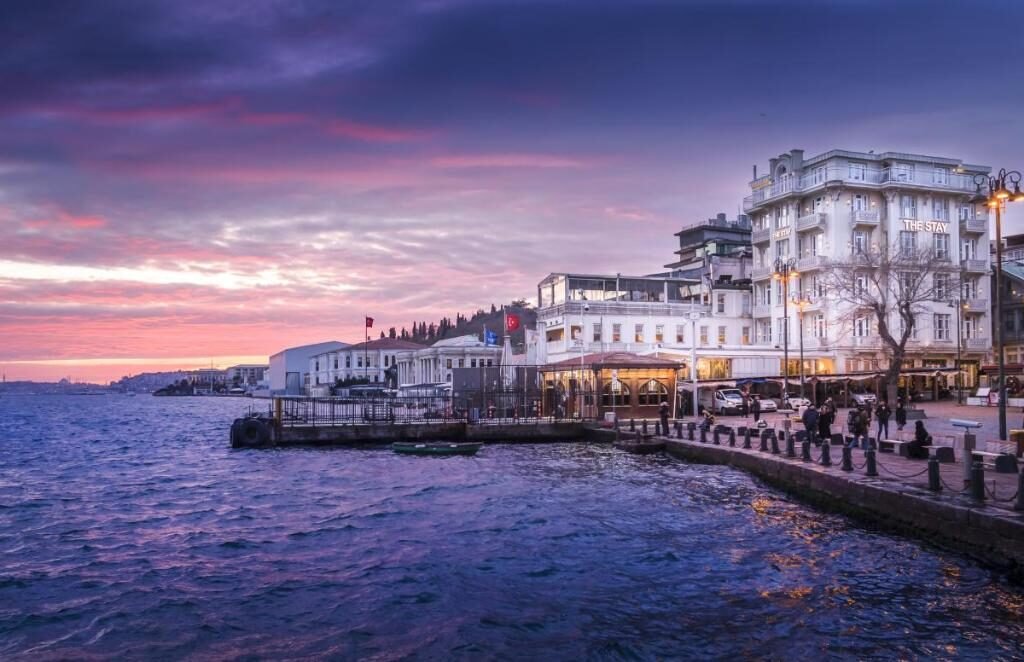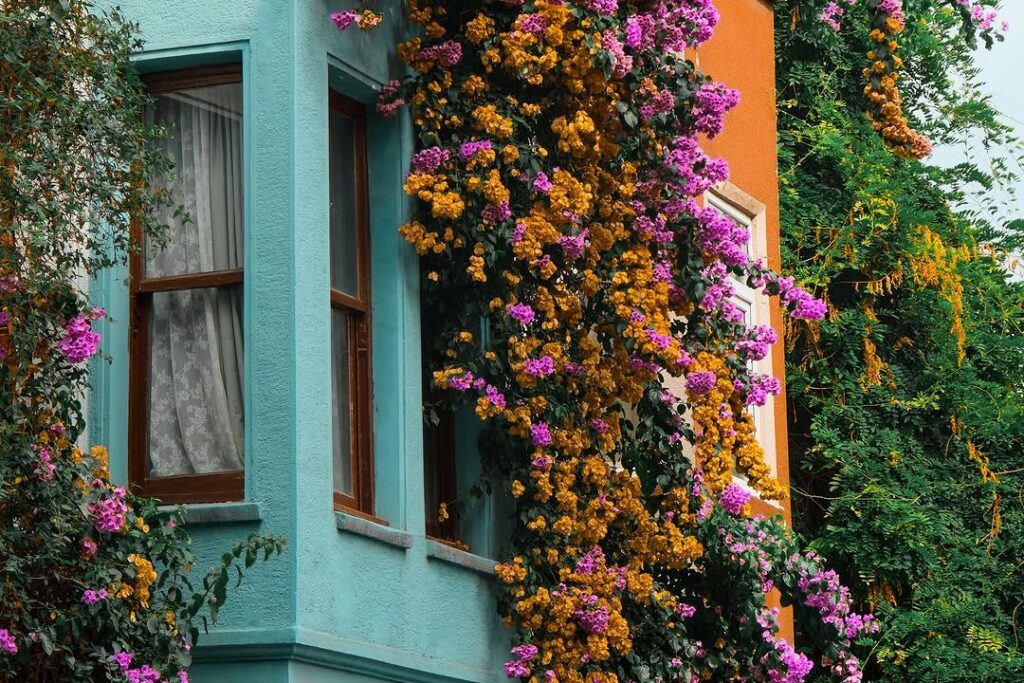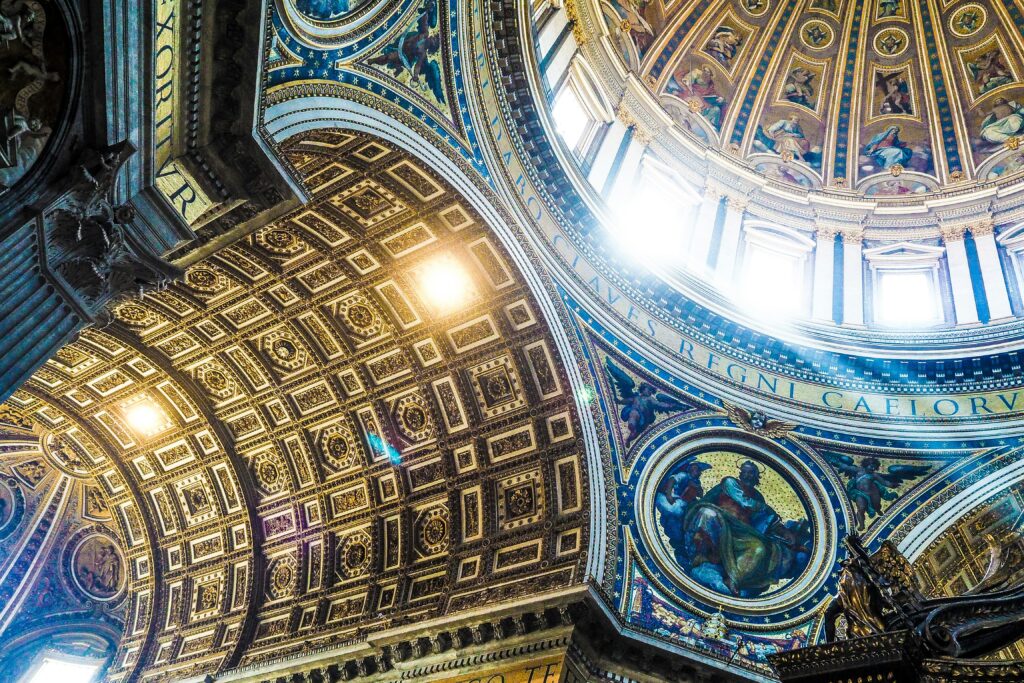Exploring a city as rich and diverse as Istanbul might feel overwhelming, but there’s no need to worry—we’re here to help. Read this guide as you embark on your adventure through this splendid city.
We’ve compiled a list of the best places to visit in Istanbul, from the most famous landmarks to secret gems waiting to be discovered.
Table of Contents
BEST PLACES TO VISIT IN ISTANBUL
It would be quite impossible to list all the places to visit in Istanbul, there are so many, I, therefore, offer you a summary of the “must-see” places not to be missed during a stay in Istanbul, followed by a program of visits. I advise you also to get this tourist pass if you want to get the most out of your visit, really convenient!
1. HAGIA SOPHIA
![Ultimate Istanbul Guide & Perfect Istanbul Itinerary: 1 to 7 days [2024] 9 Hagia Sophia Best Places To Visit In Istanbul](https://artandthensome.com/wp-content/uploads/2024/02/419777958_965003375267404_5188777029186642680_n-819x1024.jpg)
Hagia Sophia was long the largest church in the Christian world, and its architecture subsequently inspired many religious buildings. Its grandiose size and impressive dome make it the largest building in Istanbul. After the Ottoman conquest, it was converted into a mosque and served as an example for future Ottoman mosques. Today, it is a museum that attracts millions of visitors each year and is recognized as a UNESCO World Heritage site. Hagia Sophia is a stunning architectural marvel that features old mosaics, an enormous dome, and elements added during the Ottoman period, such as the mihrab and the library. Visitors to the museum can explore the interior and marvel at the blend of Byzantine and Islamic architectural styles. Within the walls of Hagia Sophia, you will also discover the magnificent tombs of sultans and princes, these tombs are beautifully decorated with intricate tile work and calligraphy, and offer a glimpse into the history of the Ottoman Empire.
BOOK HAGIA SOPHIA TOUR AND SKIP THE LINE
2. THE BLUE MOSQUE
![Ultimate Istanbul Guide & Perfect Istanbul Itinerary: 1 to 7 days [2024] 10 Blue Mosque Best Places To Visit In Istanbul](https://artandthensome.com/wp-content/uploads/2024/02/71847218_149752799628808_816433525862909014_n-819x1024.jpg)
The Blue Mosque, also known as the Mosque of Sultan Ahmet, is one of the most beautiful mosques in Istanbul. Built in the 17th century by students of the great architect Sinan, its architecture is inspired by that of Hagia Sophia, as are many mosques in Istanbul. However, it is the only mosque in the city to have six minarets, which caused a bit of controversy at the time of its construction. When the sultan learned that no mosque could have more minarets than that of Mecca, he paid for the addition of a minaret to the Grand Mosque in Mecca, and the problem was solved! The Blue Mosque owes its nickname to the thousands of pieces of blue ceramic that adorn its interior, creating a mesmerizing effect. Visitors can admire the intricate details and different cupolas of the mosque, which are simply magnificent. As with other mosques in Istanbul, visitors cannot walk around freely, as the center is mainly dedicated to prayer. However, it is a must-visit place in Istanbul, and a great opportunity to learn more about the city’s history and culture.
3. TOPKAPI PALACE AND ITS HAREM
![Ultimate Istanbul Guide & Perfect Istanbul Itinerary: 1 to 7 days [2024] 11 Topkapi Palace Best Places To Visit In Istanbul](https://artandthensome.com/wp-content/uploads/2024/02/258842528_572733757163148_7444383871011135398_n-819x1024.webp)
Another symbolic monument to visit in Istanbul, Topkapi Palace is actually a large palace complex. It housed the imperial family and the Ottoman government for centuries. Topkapi Palace is divided into three parts:
- The Ottoman Museum, which occupies different pavilions of the “public” palace
- The Harem, or private part, place of residence of the female members of the Sultan’s family
- The Gardens: With its beautiful ceramic decor and magnificent architecture, it feels like a palace from 1001 nights!
BOOK TOPKAPI PALACE HAREM TOUR
4. SULEIMAN MOSQUE
![Ultimate Istanbul Guide & Perfect Istanbul Itinerary: 1 to 7 days [2024] 12 Suleiman Mosque](https://artandthensome.com/wp-content/uploads/2024/02/273958534_3897852183673334_6580165826998074291_n.webp)
Another must-see monument in Istanbul is the Suleymaniye Mosque, also known as the Suleiman Mosque. It was built between 1550 and 1557, towards the end of the rule of Suleiman the Magnificent, and is the work of the great architect Sinan, who was very important in the history of architecture in Istanbul. The style of the Suleymaniye Mosque evokes that of Hagia Sophia, which was a point of reference for many architects in Istanbul. The mosque is distinguished by its four minarets, which symbolize that Suleiman was the fourth sultan to live in Istanbul. The sultan wanted to mark the end of his reign with the construction of a major building in Istanbul, and the Suleymaniye Mosque certainly achieved that goal. The Süleymaniye Mosque dominates the Golden Horn from the top of its hill and can be seen from different points of the city. Besides the mosque, the complex houses in its courtyard various mausoleums, including that of Sultan Suleiman and his wife Roxelana, called Hürrem in Turkish, as well as that of Mimar Sinan.
5. THE BASILICA CISTERN
![Ultimate Istanbul Guide & Perfect Istanbul Itinerary: 1 to 7 days [2024] 13 Basilica Cistern](https://artandthensome.com/wp-content/uploads/2024/02/427458139_914092436878761_5143450609836532565_n-819x1024.webp)
A real curiosity in Istanbul that you should not miss is the Basilica Cistern. As its name suggests, the cistern was originally a water storage created under the Byzantine Empire. However, today people come here for the monumental architecture and the somewhat mysterious, even mystical atmosphere that emanates from it. Inside, you can admire 336 columns, 9 meters high, with their feet in the water, and lit by a reddish light that offers an almost otherworldly spectacle. You may even see a few fish swimming in the water. Follow the somewhat signposted route that leads you to the “Column of Tears,” and then to the heads of Medusa supporting two columns. It’s unclear where these heads come from, but they add to the intrigue and mystery of the place. Concerts are sometimes held in the Basilica Cistern, thanks to its exceptional acoustics.
BOOK BASILICA CISTERN TOUR AND SKIP THE LINE
6. THE HISTORIC DISTRICT OF SULTANAHMET
![Ultimate Istanbul Guide & Perfect Istanbul Itinerary: 1 to 7 days [2024] 14 Sultanahmet](https://artandthensome.com/wp-content/uploads/2024/02/422048239_18121421839337271_6612621860265778222_n-820x1024.webp)
Sultanahmet is a historic district in Istanbul, Turkey, and home to many of the city’s most famous landmarks, such as the Hagia Sophia, Blue Mosque, and Topkapi Palace. The district also features charming cobblestone streets, traditional Ottoman-style architecture, and lively bazaars selling everything from spices to textiles. Visitors can immerse themselves in Istanbul’s rich history by exploring the numerous museums, mosques, and ancient ruins in the area, while also indulging in delicious Turkish cuisine at the many restaurants and cafes.
7. HIPPODROME SQUARE
![Ultimate Istanbul Guide & Perfect Istanbul Itinerary: 1 to 7 days [2024] 15 Sultanahmet Square Istanbul](https://artandthensome.com/wp-content/uploads/2024/02/277703179_139736401917572_5897454125554902908_n-1024x1024.webp)
Sultanahmet Square is a vibrant public square located in the historic Sultanahmet district of Istanbul, Turkey. This bustling area was once the site of the great Hippodrome of Constantinople, inspired by the Circus Maximus of Rome. While only a small portion of the Hippodrome remains visible today, visitors can still explore the square and discover its rich history. In ancient times, the Hippodrome was a central gathering place for the people of Constantinople and was often used for public events and games, including thrilling chariot races. Over the centuries, the Hippodrome underwent many changes and renovations, and it finally took on its final dimensions under the rule of Emperor Constantine. Today, Hippodrome Square is a bustling hub of activity in Istanbul, filled with lively street vendors, cafes, and shops. Visitors can take in the sights and sounds of the city while admiring the remaining monuments of the Hippodrome, including the Obelisk of Theodosius, the Serpentine Column, and the German Fountain. You can still find ancient columns there, and you can also visit the Museum of Turkish and Islamic Arts , housed in the former palace of Ibrahim Pasha , Sultan Suleiman the Magnificent’s right-hand man.
8. THE GRAND BAZAAR AND THE EGYPTIAN BAZAAR
![Ultimate Istanbul Guide & Perfect Istanbul Itinerary: 1 to 7 days [2024] 16 Spice Bazaar Istanbul](https://artandthensome.com/wp-content/uploads/2024/02/426401289_1412874449601135_7910267325800986988_n-819x1024.webp)
Bazaars are an integral part of Istanbul’s culture and history, similar to the souks found in Arab countries. The Grand Bazaar, the largest covered market in the world with its 45,000 m2, is undoubtedly a must-see place in Istanbul. If you’re looking for a more authentic bazaar experience, I recommend visiting the Spice Bazaar (also known as the Egyptian Bazaar). Though smaller and less imposing than the Grand Bazaar, it has a unique and charming atmosphere with its traditional stalls of spices, fruits, vegetables, and sweets. Even though it’s a tourist destination, many locals also frequent the Spice Bazaar. Worth visiting is Mehmet Effendi’s coffee shop, a popular spot among Istanbul’s residents.
9. ISTANBUL’S NEW MOSQUE-YENI CAMI
![Ultimate Istanbul Guide & Perfect Istanbul Itinerary: 1 to 7 days [2024] 17 New Mosque In Istanbul](https://artandthensome.com/wp-content/uploads/2024/02/407466397_862549575661285_5518574334250057744_n-820x1024.webp)
Istanbul is home to numerous mosques, and among them, the stunning New Mosque should not be missed. Located in Eminönü Square on the Golden Horn, the mosque is easily accessible from the Beyoǧlu district via the modern Galata Bridge. The square is a bustling hub in Istanbul, with boats arriving and departing for Üskudar and Kadikoy on the other side of the Bosphorus. The New Mosque is an impressive structure, both inside and out, and is adorned with exquisite Iznik mosaics, similar to those found in the Blue Mosque. Despite its name, the New Mosque is quite old, dating back to the 17th century. It was commissioned by Sultana Safiye, one of the most powerful “queen mothers” in Ottoman history, who sought to embellish Istanbul with stunning monuments. A visit to this mosque is a must during your stay in Istanbul, and it will leave you in awe of the city’s rich history and architecture.
10. THE OLD DISTRICT OF PERA- BEYOǦLU
![Ultimate Istanbul Guide & Perfect Istanbul Itinerary: 1 to 7 days [2024] 18 Galata Tower](https://artandthensome.com/wp-content/uploads/2024/02/425285744_6561455947288522_83624602684141755_n-819x1024.webp)
Let’s continue exploring Istanbul by crossing to the other side of the Golden Horn. One of the ways to do so is by walking across the Galata Bridge. Although the bridge itself is not particularly attractive, it offers a stunning view of the city and is a popular spot for fishing. Below the bridge, there are numerous cafes and restaurants where you can enjoy the view and have a meal. The old neighborhood of Pera, now known as Beyoǧlu, was home to many Europeans living in Istanbul, giving it a very European feel while still maintaining its Turkish character.
11. AVENUE ISTIKLAL
![Ultimate Istanbul Guide & Perfect Istanbul Itinerary: 1 to 7 days [2024] 19 Islitkal Avenue](https://artandthensome.com/wp-content/uploads/2024/02/425122592_2389516594565122_2703212609796014877_n-1024x818.webp)
Istiklal Avenue is Istanbul’s heart! Reserved for pedestrians and crossed by an old historic tram, you will find many shops, cafeterias (the typical lokantassi ), and tea rooms. Lively day and night, it is a must-see at least once during a stay in Istanbul. At the very end, Taksim Square is a place of passage and a transport hub, even if it is not necessarily lovely.
12. THE GALATA TOWER
![Ultimate Istanbul Guide & Perfect Istanbul Itinerary: 1 to 7 days [2024] 20 Galata Tower](https://artandthensome.com/wp-content/uploads/2024/02/427710358_1235997424454848_4837058445728196139_n-819x1024.webp)
The Galata Tower is one of the emblematic monuments of Istanbul. It was built in 1348 by the Genoese and dominates the Golden Horn. It is a must-do to climb to the top to admire the magnificent panoramic view of Istanbul. A restaurant is also there.
BOOK GALATA TOWER FAST TRACK AUDIO GUIDE
13. BOSPHORUS CRUISE
![Ultimate Istanbul Guide & Perfect Istanbul Itinerary: 1 to 7 days [2024] 21 Bosphorus](https://artandthensome.com/wp-content/uploads/2024/02/250551137_177386234586310_8378859079470210923_n-1024x1024.webp)
A boat trip is an essential activity to include when visiting Istanbul. The city’s unique geography, located between an estuary and strait and spanning two continents, offers an ideal setting for cruising. The most interesting boat trip is undoubtedly the one along the Bosphorus, which divides the two continents. There are two options available, a shorter cruise to the second bridge, or a longer one that goes all the way to the Black Sea. The departure point is at the tram terminus in the Kabataş district.
14. DOLMABAHCE PALACE
![Ultimate Istanbul Guide & Perfect Istanbul Itinerary: 1 to 7 days [2024] 22 Dolmabahce Best Places To Visit In Istanbul](https://artandthensome.com/wp-content/uploads/2024/02/427719999_2057075754670435_3709783602524435069_n-819x1024.webp)
After Topkapi Palace, the Dolmabahce Palace in Istanbul is a must-visit. It was built between 1842 and 1853 to replace the traditional Topkapi Palace as the sultan’s residence, harem, and place of government. The Dolmabahce Palace is less exotic for Europeans, as it was built in the “Western” fashion, with furniture imitating those of European palaces. However, it is still an important part of Ottoman and Turkish history. Atatürk, the founder of modern Turkey, used it as his summer palace and died there in 1938. In addition to the apartments, harem, and gardens, the palace houses a museum of 19th-century paintings and a museum of clocks. If you can only visit one palace in Istanbul, I suggest choosing Topkapi, which is more typical and exotic for Europeans.
15. KARIYE MOSQUE
![Ultimate Istanbul Guide & Perfect Istanbul Itinerary: 1 to 7 days [2024] 23 Kariye Mosque Istanbul](https://artandthensome.com/wp-content/uploads/2024/02/340982660_1211638866383965_6876048134427649336_n-1024x873.webp)
Let’s continue this guide to Istanbul by moving further from the center. The ancient Kariye Mosque is a bit far from downtown Istanbul but worth a detour with some time. This old Byzantine church is renowned for its magnificent 14th-century mosaics . It’s not very big, but you can spend some time admiring the mosaics and the frescoes in the funerary chapel. Just like Hagia Sophia, it was converted into a mosque.
16. THE NEIGHBORHOODS OF FENER AND BALAT
![Ultimate Istanbul Guide & Perfect Istanbul Itinerary: 1 to 7 days [2024] 24 Fener Istanbul](https://artandthensome.com/wp-content/uploads/2024/02/350918680_1183900585580394_1953591443181505789_n-1024x1024.webp)
Other districts to visit during a stay in Istanbul, I suggest Fener and Balat. Side by side, these two old districts of Istanbul are located partly along the Golden Horn. They are easily accessible by transport, tram, or bus from Eminönü Square.
The Neighborhood Of Fener
The district of Fener was once the Greek quarter of Istanbul, dating back to the time of the Byzantine Empire. However, since the Ottoman conquest of Constantinople, it became a predominantly Greek neighborhood. Many Greeks fled the country after the collapse of the Ottoman Empire, particularly after the anti-Greek riots of the 1950s. Despite its past as a prosperous area with beautiful Ottoman residences, the neighborhood underwent significant changes. It became a popular destination for newcomers from rural areas and immigrants from other countries. As a result, it has transformed into a working-class district, and many of the historic buildings have fallen into disrepair, though they still hold their beauty and architectural significance.
You can see there the seat of the Orthodox Ecumenical Patriarchate (the Vatican of the Orthodox), the ancient walls of Theodosius, and the beautiful Bulgarian St.Stephen Orthodox Church – like a jewel case containing shining gold adornment.
Balat District
The district of Balat has a rich history as the Jewish quarter of Constantinople, particularly after the expulsion of the Jews from the kingdom of Castile in 1492. It was also a rather posh neighborhood, boasting many beautiful and historic houses typical of Istanbul and a few synagogues, such as the Ahrida Synagogue, which is still in operation and open to the public. Today, the district is undergoing a revitalization process, with the addition of restaurants, bars, trendy shops, and art galleries. Its colorful houses make it a pleasant neighborhood to stroll around in Istanbul. However, it’s important to note that the interesting part of the district is small, limited to a few streets that have been rehabilitated, especially between Yildirim and Vodina streets, not far from the Golden Horn.
17. KADIKOY
![Ultimate Istanbul Guide & Perfect Istanbul Itinerary: 1 to 7 days [2024] 25 Kadikoy Best Places To Visit In Istanbul](https://artandthensome.com/wp-content/uploads/2024/02/315564692_1199199047372975_699045733517258876_n-819x1024.webp)
Kadıköy, also known as the “village of the judge,” is a district located on the Asian side of Istanbul, to the south of Üsküdar, and southeast of the European district of Sultanahmet. The Galata Bridge connects the district to Eminönü Square or Karaköy Pier on the European side, and boats are frequent, departing every 15 minutes during the day and every half hour in the evening until 11:00 p.m. for Karaköy. The district has a long and rich history, founded in 685 BC as an ancient Greek colony known as Chalcedon. The Ottomans later conquered it in 1353, exactly a century before Constantinople became Istanbul. Today, Kadıköy is an important urban center on the Asian side of Istanbul, with a population of around 500,000 inhabitants, and is frequently connected by boat to the European side. It is a typical and vibrant district of Istanbul that offers a beautiful view of both the European and Asian shores, particularly the tip of the Serail and the Sultanahmet districts. One of the highlights of Kadıköy is its lively atmosphere, which can be experienced in the small pedestrian area near the quays. Visitors can find plenty of shops, bars, cafes, and restaurants there, making it an ideal place to dine and socialize. For those with more time, a chic district unfolds to the south along the coast, which can be explored by taking a ride on the small old tram that makes a loop in the area.
18. ORTAKOY
![Ultimate Istanbul Guide & Perfect Istanbul Itinerary: 1 to 7 days [2024] 26 Ortakoy](https://artandthensome.com/wp-content/uploads/2024/02/241480989_275510097478785_4689146870532919652_n-1024x695.webp)
Ortaköy is a small and fashionable village that has become part of the Beşiktaş district in Istanbul. It was originally a cosmopolitan fishing village, home to Turks, Jews, and Armenians. Today, it is renowned for its iconic mosque on the Bosphorus, a must-see attraction in Istanbul. Ortaköy still has traces of its multicultural past, including a synagogue and a Greek church. However, the area has undergone significant transformation in recent years. It has become a trendy hub with various bars, cafes, restaurants, and art galleries, making it a popular destination for locals and tourists alike. The village is also home to Istanbul Galatasaray University, but the best way to appreciate its charm is by taking a boat ride along the Bosphorus. However, as the area is only accessible by bus or boat, it may take some time to explore it fully. Therefore, for those with only a limited time in Istanbul, visiting Ortaköy may not be a top priority.
19. ARNAVUTKOY
![Ultimate Istanbul Guide & Perfect Istanbul Itinerary: 1 to 7 days [2024] 27 Arnavutkoy](https://artandthensome.com/wp-content/uploads/2024/02/397501164_1287983361905151_1395995262329595464_n-819x1024.webp)
Arnavutköy, which means “the Albanian village” in Turkish, is another charming old village in Istanbul, located on the European side of the Bosphorus, further away from Ortaköy. It was also a cosmopolitan village, and its most famous feature is the beautiful Ottoman wooden houses that line its streets. To fully appreciate the beauty of these houses, it’s best to view them from a boat ride along the Bosphorus. Arnavutköy’s architecture and history make it a unique destination in Istanbul, and a must-see for those interested in the city’s cultural heritage.
20. THE MOST BEAUTIFUL PARKS AND GARDENS IN ISTANBUL
![Ultimate Istanbul Guide & Perfect Istanbul Itinerary: 1 to 7 days [2024] 28 Emirgan Park Istanbul](https://artandthensome.com/wp-content/uploads/2024/02/95376362_223929009028603_8820938626664829003_n-819x1024.webp)
Here are the most beautiful parks and gardens in Istanbul:
- Gülhane Park (Rose Garden Park) is the most central. It was originally part of Topkapi Palace before becoming a public garden in Istanbul. With its 15 hectares, it is very pleasant, close to Sultanahmet.
- Eminönü Square Yildiz Park (Park of the Star) is located in the Beşiktas district and overlooks the Bosphorus. This was the Yildiz Imperial Palace Park. Today it is one of the largest parks in Istanbul, with around 45 hectares. It offers amazing views, as well as different spaces, trees, flowers, and two old Ottoman pavilions. Good to know: a cable car takes you to the top.
- Emirgan Park: this time you will have to go much further along the Bosphorus to discover this magnificent park known for its tulips. This is also one of the largest parks in Istanbul.






